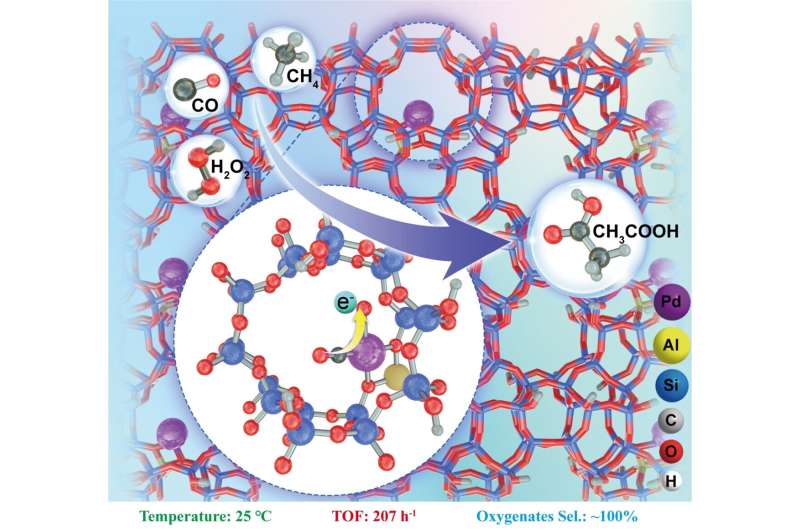This article has been reviewed according to Science X's editorial process and policies. Editors have highlighted the following attributes while ensuring the content's credibility:
fact-checked
peer-reviewed publication
trusted source
proofread
Team modulates electronic state of single-atom catalysts by CO molecular decoration for efficient methane conversion

Direct methane conversion has advantages such as low energy consumption, fewer processes, and better economics. However, it is difficult to activate methane at room temperature due to the high dissociation energy of C-H bonds of methane. Additionally, the target products, such as methanol, acetic acid, and other oxygenates, are prone to over-oxidation, resulting in the generation of CO2. Therefore, the design of catalysts with high activity and selectivity is important.
In a study published in Angewandte Chemie International Edition, a group led by Prof. Zhang Tao, Prof. Wang Xiaodong, and Assoc. Prof. Huang Chuande from the Dalian Institute of Chemical Physics (DICP) of the Chinese Academy of Sciences (CAS), collaborating with Prof. Chang Chunran's group from Xi'an Jiaotong University, has realized the efficient direct conversion of methane through single-atom catalysis at room temperature.
The researchers proposed a strategy involving CO molecule modification to regulate the electronic structure of single-atom catalyst M1-ZSM-5 (M = Rh, Ru, Fe), which enhances the efficiency of direct methane conversion. They realized catalyzing methane conversion with H2O2 as an oxidant at room temperature (25 °C). The turnover frequency (TOF) of Pd1-ZSM-5 reached 207 h-1 with nearly 100% selectivity towards oxygenates.
Combining experimental characterization with density functional theory (DFT) calculations, the researchers discovered that the C atom in the CO molecule tends to coordinate with the Pd1 single atom, transferring electrons from CO to the active oxygen center L-Pd1-O (L = CO), resulting in the reduce of the dissociation barrier of C-H bonds of methane, from 1.27 eV to 0.48 eV.
Moreover, this strategy exhibited good universality as TOF of the M1-ZSM-5 (M = Rh, Ru, Fe) series catalysts could be increased by 3.2 to 11.3 times through CO molecule modification.
"We have developed the electronically tunable molecular sieve-supported M1-O isolated active centers, providing a new method to achieve selective methane conversion to chemicals under mild conditions," said Prof. Wang.
More information: Weibin Xu et al, Metal‐Oxo Electronic Tuning via In Situ CO Decoration for Promoting Methane Conversion to Oxygenates over Single‐Atom Catalysts, Angewandte Chemie International Edition (2024). DOI: 10.1002/anie.202315343
Journal information: Angewandte Chemie International Edition
Provided by Chinese Academy of Sciences





















